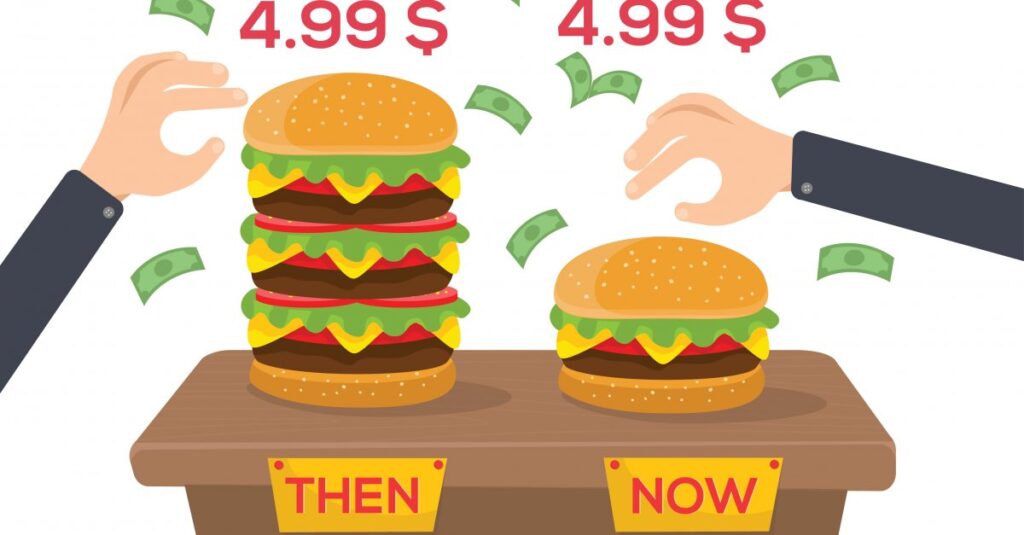Inflation is often viewed with concern, as it erodes purchasing power and can lead to economic instability. However, a certain level of inflation, when carefully managed, can actually benefit the economy. In this article, we will explore the various ways inflation can be good for the economy, breaking down key concepts, the types of inflation that can be beneficial, and why central banks target inflation rates.

Understanding Inflation: A Brief Overview
The gradual rise in the average price of goods and services over time in an economy is known as inflation. It is typically measured by indices such as the Consumer Price Index (CPI) or the Producer Price Index (PPI), which track the prices of a basket of goods and services over time.
The Dual Nature of Inflation
Inflation has a dual nature. On one hand, it erodes the purchasing power of money, which means consumers need more money to buy the same quantity of goods. This is why inflation often triggers concern. On the other hand, moderate inflation is generally seen as a sign of a growing economy, with positive effects on employment, investment, and production.
Historically, economies have experienced inflation in both mild and extreme forms. Hyperinflation, as seen in cases like Zimbabwe in the early 2000s or Germany during the Weimar Republic, can lead to economic collapse. However, low to moderate inflation, particularly when it’s well-managed, is often associated with periods of robust economic growth.
Types of Inflation
Before diving into how inflation can be good for the economy, it’s important to understand that not all inflation is created equal. Economists classify inflation into several categories, each with distinct causes and effects on the economy.
Demand-Pull Inflation: Occurs when the demand for goods and services exceeds the economy’s productive capacity. This is typically seen during periods of economic expansion.
Cost-Push Inflation: Arises when the cost of production increases, often due to higher prices for raw materials, energy, or labor. This drives up the overall price level.
Built-In Inflation: Also known as wage-price inflation, this happens when businesses raise prices to cover higher wages, and workers demand higher wages to keep up with the cost of living. This can create a feedback loop of inflationary pressure.
Hyperinflation: A very rapid and out-of-control inflationary spiral that erodes currency value. It’s often a sign of economic mismanagement and political instability.
Moderate Inflation: The sweet spot for inflation, where price increases remain manageable and predictable, typically between 2% and 3% annually. This level of inflation is often targeted by central banks.
When Is Inflation Beneficial for the Economy?
Stimulating Consumption and Economic Growth
One of the primary ways inflation can benefit the economy is by encouraging consumers to spend rather than save. In a low inflation environment, consumers expect prices to rise gradually over time. This creates an incentive to buy goods and services sooner rather than later, boosting demand in the economy.
Spending Now, Not Later: If consumers believe prices will be higher in the future, they are more likely to make purchases today. This helps businesses grow, which in turn stimulates job creation and investment. The increase in spending helps to maintain economic momentum, particularly in periods of sluggish growth or recession.
Increased Production: As businesses respond to higher demand, they ramp up production. This often requires hiring more workers and investing in new technologies or facilities, further boosting economic activity.
Reducing the Real Debt Burden
Another significant benefit of inflation is its impact on debt. In an inflationary environment, the real value of debt diminishes over time. Borrowers, including governments, businesses, and households, can repay their loans with “cheaper” money than they borrowed. This is especially true for fixed-rate debt, such as mortgages or government bonds.
Inflation and Public Debt: For governments, inflation can help manage large public debts. As the economy grows and nominal GDP increases due to inflation, the debt-to-GDP ratio declines, making it easier for governments to service their debts without raising taxes or cutting spending.
Household and Business Debt: Inflation can also ease the debt burden on households and businesses. As wages and profits rise in nominal terms due to inflation, fixed debt payments become a smaller percentage of income, reducing the strain on borrowers.
Enabling Flexible Wages and Prices
Inflation allows for greater flexibility in wages and prices, which can be important for maintaining employment and overall economic stability. In a low or zero-inflation environment, businesses may struggle to adjust wages downward in response to economic pressures, leading to layoffs and unemployment.
Nominal Wage Rigidity: Many economists argue that wages are “sticky” in a downward direction, meaning that employers find it difficult to reduce wages, even in times of economic downturn. Moderate inflation helps alleviate this problem by allowing wages to rise slowly over time in nominal terms, while real wages (adjusted for inflation) remain more flexible.
Price Flexibility: Similarly, inflation gives businesses more room to adjust prices without creating shocks in the market. This can help maintain profitability during periods of rising input costs, such as when raw materials become more expensive.
Encouraging Investment
Inflation can act as an incentive for both individuals and businesses to invest rather than hoard cash. When inflation is moderate and stable, it encourages savers to put their money to work in productive investments like stocks, bonds, or real estate, rather than letting it sit idle in a bank account where its value erodes over time.
Investment Over Saving: In an inflationary environment, the purchasing power of cash savings declines, making it less attractive to hold onto money. Investors seek higher returns to outpace inflation, often leading to increased investments in capital markets, businesses, and infrastructure.
Business Expansion: Companies are also incentivized to invest in their growth, knowing that borrowing costs may remain low in real terms, while inflation gradually erodes the value of their debt. This can lead to more innovation, job creation, and economic dynamism.
Central Banks’ Role in Targeting Inflation
One of the most significant roles of inflation in modern economies is how it interacts with central bank policy. Central banks, such as the Federal Reserve in the United States or the European Central Bank, typically target a certain level of inflation, often around 2%. This inflation target is intended to strike a balance between stimulating growth and preventing runaway inflation.
Monetary Policy and Inflation Targeting: By adjusting interest rates and using other monetary policy tools, central banks can manage inflation expectations and keep the economy on a stable growth path. Low inflation targets help avoid the problems of deflation (falling prices), which can lead to reduced consumer spending, lower wages, and economic stagnation.
Avoiding Deflationary Spirals: Deflation, or falling prices, can be disastrous for an economy. Consumers delay purchases in anticipation of even lower prices, businesses cut production and wages, and the economy contracts. Controlled inflation, therefore, serves as a buffer against these deflationary pressures.
How Central Banks Use Inflation Targeting to Stabilize the Economy
Central banks around the world use inflation targeting as a key tool to stabilize the economy. They do this by adjusting interest rates, open market operations, and controlling the money supply. Inflation targeting involves setting an explicit target for the inflation rate, which serves as a guide for monetary policy decisions. The primary objectives are to anchor inflation expectations, foster economic stability, and ensure that the inflation rate remains within a range that supports long-term growth.
Interest Rates and Inflation
Interest rates are vital to managing inflation. When inflation is rising too quickly, central banks may raise interest rates to cool down the economy. Conversely, when inflation is too low or when the economy is facing recessionary pressures, central banks lower interest rates to stimulate borrowing and investment.
Raising Rates to Combat High Inflation: Higher interest rates make borrowing more expensive, reducing consumer and business spending. This, in turn, lowers demand for goods and services, which helps to bring inflation down.
Lowering Rates to Spur Growth: On the flip side, lower interest rates reduce the cost of borrowing, encouraging investment and spending. This can be particularly important in periods of low inflation or economic stagnation.
Open Market Operations and Inflation
Open market operations (OMOs) refer to the buying and selling of government securities in the open market by central banks. OMOs are used to influence the level of reserves in the banking system, which affects the money supply and short-term interest rates.
Buying Government Securities: When a central bank buys government securities, it injects money into the economy, increasing the money supply. This can stimulate inflation and boost economic activity.
Selling Government Securities: Conversely, when a central bank sells government securities, it reduces the money supply, putting downward pressure on inflation.
Inflation in Different Economic Theories
Keynesian Perspective
From a Keynesian perspective, inflation is often seen as a necessary evil during periods of economic expansion. Keynesians argue that moderate inflation can help to lower unemployment and boost economic output by encouraging consumption and investment.
Inflation as a Sign of Growth: Keynesian economics suggests that inflation is a natural outcome of economic growth. As demand for goods and services increases, prices rise, which encourages producers to expand production and hire more workers.
Monetarist Perspective
Monetarists, on the other hand, focus on the role of the money supply in driving inflation. They argue that inflation is primarily a monetary phenomenon and can be controlled by managing the money supply.
Quantity Theory of Money: According to the quantity theory of money, if the money supply grows faster than the economy’s ability to produce goods and services, inflation will occur. Monetarists advocate for policies that keep the growth of the money supply in line with economic output.
Austrian Perspective
The Austrian school of economics takes a more critical view of inflation, arguing that any artificial increase in the money supply can lead to economic distortions and misallocation of resources. Austrians prefer a stable money supply and often criticize inflation-targeting policies as leading to “boom and bust” cycles.
Case Studies: When Inflation Benefited Economies
Post-World War II Economic Expansion
Following World War II, many Western economies, including the United States and the United Kingdom, experienced moderate inflation alongside strong economic growth. In the U.S., the period from 1945 to the early 1970s saw significant increases in living standards, technological innovation, and job creation. Moderate inflation helped reduce the burden of wartime debts while stimulating consumer demand and investment.
Japan’s Lost Decade
On the other hand, the 1990s Japanese experience highlights the perils of both deflation and sluggish inflation. Japan faced deflationary pressures for a large portion of the 1990s following the burst of a big asset bubble, which contributed to the “Lost Decade,” a period of poor economic growth. Customers postponed purchases during this period in expectation of price reductions, which resulted in an extended period of economic stagnation.
The Risks of High or Uncontrolled Inflation
While moderate inflation can have positive effects, high or uncontrolled inflation can lead to significant economic problems. Hyperinflation, in particular, can devastate economies by eroding the value of currency, destroying savings, and causing widespread social and political instability.
Hyperinflation in Zimbabwe
One of the most notorious examples of hyperinflation occurred in Zimbabwe in the late 2000s. Inflation reached an astronomical 79.6 billion percent month-over-month at its peak, rendering the Zimbabwean dollar practically worthless. The causes of Zimbabwe’s hyperinflation included political instability, government mismanagement, and excessive printing of money.
Latin American Inflation Crises
Several Latin American countries, including Argentina and Brazil, have also experienced periods of extremely high inflation in the late 20th century. These episodes often stemmed from unsustainable fiscal policies, such as excessive government borrowing and deficit spending, combined with loose monetary policies.
Balancing Inflation: Finding the Sweet Spot
The key to harnessing the benefits of inflation lies in finding the sweet spot where inflation is neither too low nor too high. Most central banks target an inflation rate of around 2% to 3% per year, as this level of inflation is generally associated with stable economic growth and manageable debt levels.
Too Low (Deflation): If inflation falls too low, or if deflation sets in, economic activity may grind to a halt. Consumers and businesses delay spending, and wages may stagnate or even fall, leading to lower demand and higher unemployment.
Too High (Hyperinflation): On the other hand, if inflation spirals out of control, it can lead to a collapse in the value of money, as seen in cases like Zimbabwe and Weimar Germany. High inflation erodes consumer confidence, wipes out savings, and can lead to social unrest.
Conclusion: The Good, the Bad, and the Balanced
Inflation is a complex and multifaceted economic phenomenon. While it is often viewed negatively, moderate inflation plays a crucial role in fostering economic growth, reducing debt burdens, encouraging investment, and maintaining employment. Central banks and policymakers must strike a delicate balance, managing inflation to ensure that it supports, rather than hinders, long-term prosperity.
Understanding the different ways inflation can benefit the economy—when properly controlled—helps dispel the notion that all inflation is bad. Instead, inflation should be viewed as a tool that, when used judiciously, can promote stability and growth.
Frequently Asked Questions
1. Is inflation always bad for the economy?
No, inflation is not always bad. Moderate inflation, typically between 2% and 3%, can help stimulate economic growth, reduce debt burdens, and encourage investment.
2. How does inflation help reduce debt?
Over time, inflation lowers the actual worth of debt. Borrowers repay their debts with money that is worth less than when they initially borrowed it, making it easier to manage debt payments.
3. Why do central banks target inflation?
Central banks target inflation to ensure price stability and to avoid the negative effects of both high inflation and deflation. A stable inflation rate helps create predictable economic conditions conducive to growth and investment.
4. What is the danger of deflation?
Deflation can lead to reduced consumer spending, lower wages, and economic stagnation. When prices fall, consumers delay purchases, which reduces demand and slows economic activity.
5. Can inflation be too high?
Yes, high inflation can erode the value of money, reduce consumer confidence, and lead to economic instability. Hyperinflation, in particular, can destroy an economy, as seen in Zimbabwe and Weimar Germany.
6. What is hyperinflation?
A very high and usually rising rate of inflation is called hyperinflation. It often results from excessive money printing and can lead to a collapse in the value of a country’s currency.
7. How does inflation affect wages?
Inflation allows wages to rise over time in nominal terms, which can help maintain purchasing power. However, if wages don’t keep pace with inflation, real wages (adjusted for inflation) may fall, reducing workers’ purchasing power.
Reference : http://www.fools.com







